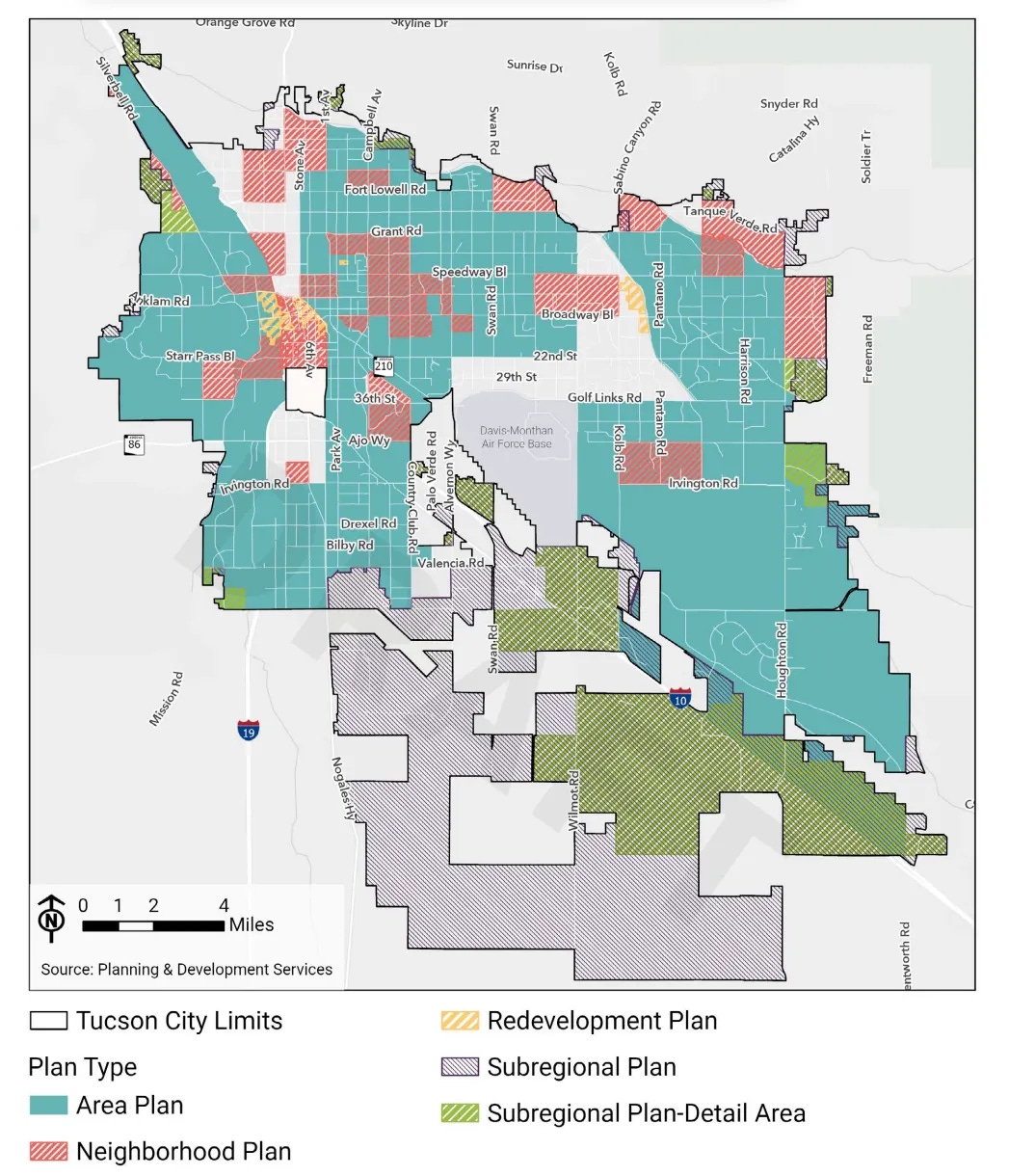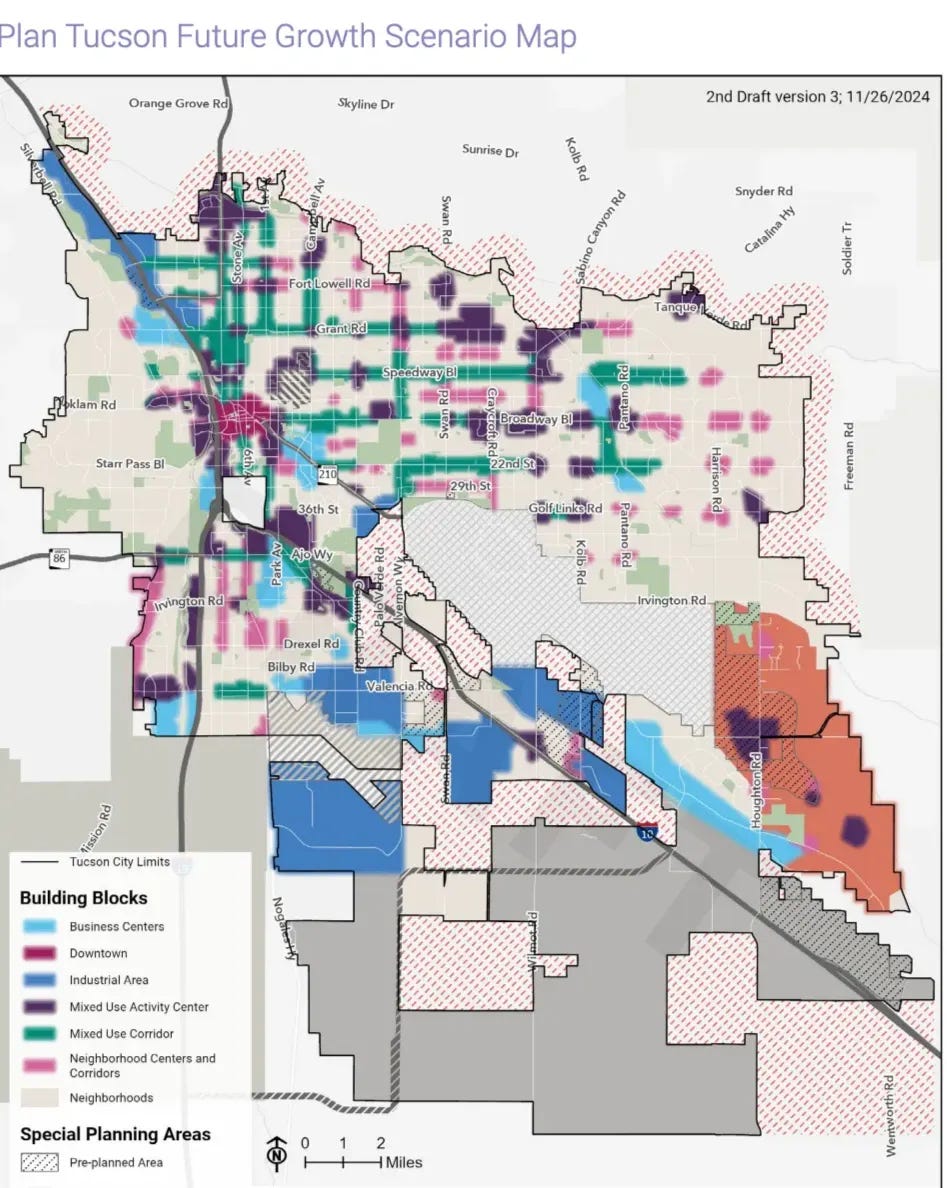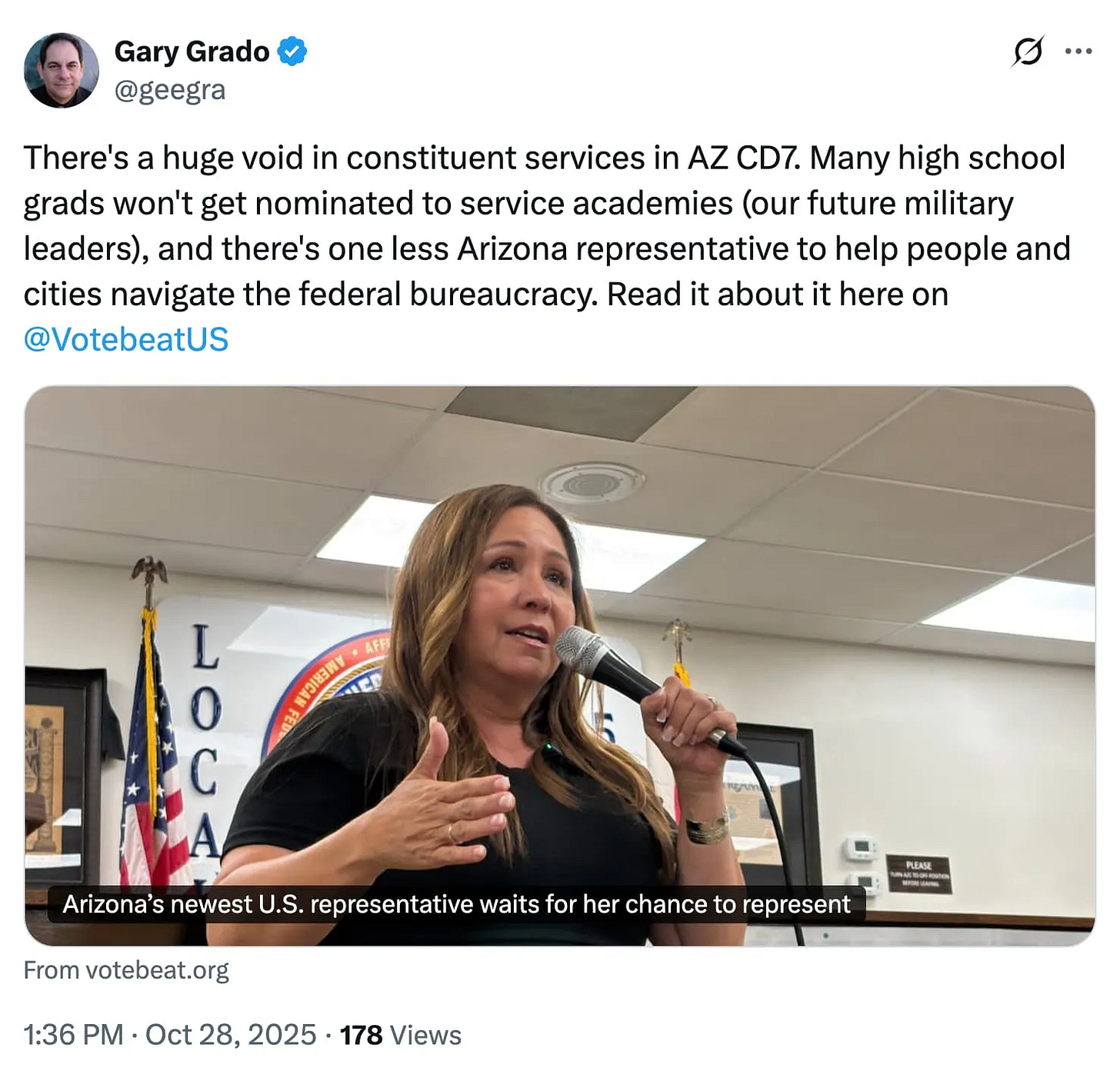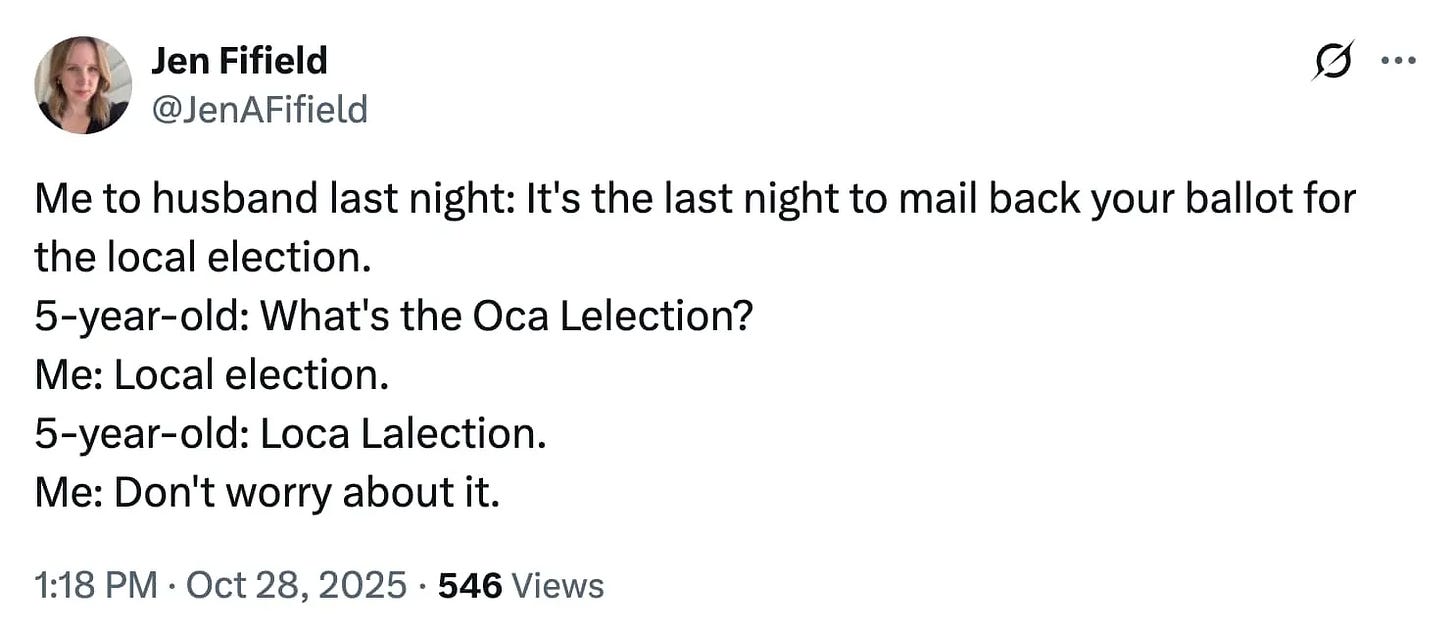Tucson’s not-so-secret plan
One plan to rule them all ... A spike in historic lows … And livin las lections locas.
Good morning, readers.
We have a quiz for everyone who has an opinion about what Tucson has done, hasn’t done and really should get around to doing.
“Plan Tucson 2025,” AKA Proposition 417, isn’t exactly a hot topic over drinks after work. But it’s an important long-term planning document that you should weigh in on.
Don’t worry — Joe read all 265 pages of Plan Tucson 2025 this week so you don’t have to. Don’t ask why he read the 2013 version, too.
Becoming a paid subscriber will help us buy him snacks for the next document dump.
The plans for Tucson’s future are hiding in your ballot as Proposition 417.
Plans to encourage development of affordable housing, climate resilience, public transit and reducing poverty through various initiatives have been woven together as part of a multi-year collaborative community conversation into what is now called Plan Tucson 2025, which voters will weigh in on during next Tuesday’s election.
We’re not going to spend this edition focused on the intricacies of long-term municipal planning for Tucson and why it is important for you to know. We are not sadists.
So we’ve put together a quiz instead! And we included all the answers in this footnote.1 You’re welcome.
Didn’t we just vote for a long-term planning document for the city of Tucson a few years ago?
A.) Yes, back in 2013. And in 2001.
B.) Well, actually, we’ve been making plans like these since 1938.
C.) No. Tucson has a bookshelf full of planning documents that are regularly being updated and those are voted on by the Tucson City Council. That’s what we pay them to do.
D.) All of the above. I’m just guessing here.
We made the first one easy, but they’re going to get tougher.
The residents back in 1938 realized the Old Pueblo should have some forward-looking documents to ensure the bureaucrats didn’t just make it up as they went along.
The planning documents, albeit aspirational to some extent, outlined where future development should go, where transportation corridors would be needed and how Tucson would use its water.
Not everything went according to plan, and the plans needed to be updated as Tucson grew and technology changed. Hence, new plans were drafted and put before voters, while keeping the spirit of the original Tucson Regional Plan alive and public involvement remained central.
Still, a few urban planners went rogue over the years — what else explains why Tucson is home to so many stravenues? (Yeah, that’s a real term, Pima County code defines them as a “street which runs diagonally between and intersects a street and an avenue.”)
So, Plan Tucson 2025 is going to be the primary planning document for the city of Tucson?
A.) Yep. That’s why it’s on the ballot.
B.) Well, actually, Plan Tucson 2025 contains multitudes. There are dozens of adopted planning documents that align with Plan Tucson 2025 and shape how Tucson can reach its goals. But a neighborhood plan for Sam Hughes will carry more weight in deciding where homeowners want to see commercial development than the citywide planning document.
C.) No. There are dozens of documents, rules, and other aspirational planning documents that play a role in both individual parcel-level planning as well as in guiding larger projects, like a new park tied to an infill development.
D.) This is a trick question! The one simple trick to thwart the city’s planning documents is to ask the Legislature to step in. Remember when the state set the minimum standards for accessory dwelling units?
It’s complicated, right? But the bottom line is that Plan Tucson 2025 won’t allow a developer to buy out a few houses in the middle of your neighborhood to put in an eight-story apartment complex in the name of affordable housing.
Did we mention that the Sam Hughes Neighborhood gets a vote on what can be built along Speedway?
Yep. Dozens of neighborhoods have taken the time and effort to draft neighborhood plans to help shape what the neighborhood will look like in the years ahead.
Which neighborhood doesn’t have a neighborhood plan filed with the city?
A.) Sam Hughes
B.) Jefferson Park
C.) Lincoln Park
D.) Flowing Wells
E.) Grant-Alvernon Area
Actually, the city does not list Flowing Wells as having a neighborhood plan on file. This means developers would default to Plan Tucson 2025 (if it passes next month), which suggests the edges of the neighborhood could be suitable for denser commercial development along the main roads.
But don’t expect an Arby’s to replace your neighborhood convenience store anytime soon. There are other considerations like traffic, noise, and setbacks to consider.
What didn’t we get that was on one of the old voter-approved plans?
A.) An outdoor concert venue in downtown Tucson.
B.) That’s an impossible question to fully answer. The document is forward-looking, not a prescription of what will happen.
C.) Both.
Plan Tucson is designed to address how developers, planners and future businesses looking to relocate to Tucson will shape development for the next 10 years.
We never got that outdoor concert hall that was part of the 2001 plan, but who knows what the next decade will bring to downtown?
What happens if voters reject Proposition 417?
A.) Nothing. The city will use the existing standards as set by the existing plan, adopted by voters in 2013. You know, before AI data centers were a thing.
B.) The city will start over again, working to draft a new long-term plan for Tucson. Plan Tucson 2028, anyone?
C.) Both are accurate.
The city is required to have a long-range plan, so if it isn’t going to be Plan Tucson 2025, a new draft will go before the voters in a few years.
We will find out together next week. Don’t forget to return your ballots!
The shoe is on the other foot: U.S. Border Patrol arrests in Southern Arizona and the rest of the U.S.-Mexico border are rising, although they’re still at historic lows, the Republic’s David Ulloa Jr reports. But the sight of a Newsweek headline that said “border apprehensions jump 83%” prompted some damage control from Trump administration officials. They put out a statement on Twitter saying Newsweek was “dishonestly splitting hairs over our historically low numbers by focusing on the percentage of change.”
Still on tribal land: The Trump administration is charging a $1,000 fee for certain non-U.S. citizens who cross the border at legal ports of entry, and that is creating a headache for the 2,000 members of the Tohono O’odham Nation who live in Mexico but regularly cross the border for medical care and other purposes, KJZZ’s Alisa Reznick reports.
To charge or not to charge: A clear divide is emerging among the candidates for three Tucson City Council seats, the Tucson Sentinel’s Jim Nintzel reports. The Democratic candidates want to keep the city’s public transportation fare-free, while the Republican candidates want to start charging fares again.
Just shooting the breeze: Arizona State University officials clarified that the Trump administration did not offer them the compact that University of Arizona officials declined to sign last week, the Republic’s Helen Rummel reports. ASU officials had been talking to Trump officials about “new and innovative approaches” to education, but ASU didn’t get a formal offer to sign the compact.
We have a formal offer for you: Click this button and we’ll deliver an endless supply of local news.
On the map: More than 400 racers showed up for the 13th annual Nogales Bicycle Classic last weekend, the Nogales International’s Graham Krewinghaus reports. Nogales is emerging as a key stop on Arizona’s racing circuit, and the race from downtown Nogales to Sonoita and back is a boost for local restaurants and hotels. (Unfortunately, Krewinghaus blew out a tire and couldn’t finish the race himself. But he swears he’ll be back at it next year.)
We hear ya, 5-year-old Fifield.
We were in stitches over this exchange between Jen Fifield, who has deftly reported on Arizona elections for years, and her kiddo.
It kinda sounds like us after we spend months thinking non-stop about local elections.
And it’s a good reminder to get your ballot to a drop box as soon as you can.
The November 4 Loca Lalection will be here before you know it!
B.) We started long-term planning documents in 1938.
B.) Plan Tucson 2025 is where planners start, but there are plans that guide development plans.
D.) As best as we can tell, Flowing Wells does not have a neighborhood plan.
C.) Both. We didn’t get that outdoor concert venue, but the reality is that it’s hard to pin accomplishments to a document like this.
C.) Both are accurate — the city has to eventually pass a long-term planning document.










Liked the unusual format. Made it fun to read.